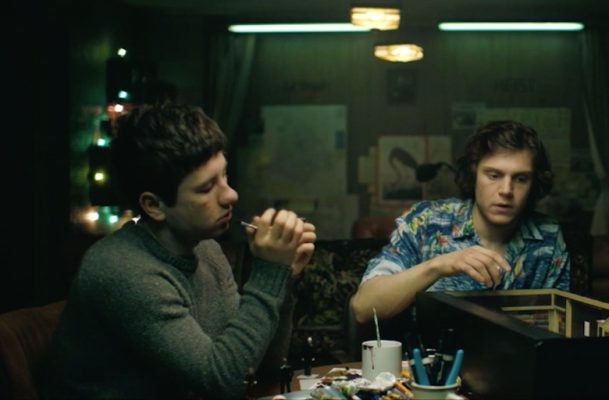@ Edinburgh Filmhouse from Fri 19th Oct 2018
This dramatisation of the real-life 2004 robbery of rare books (including a rare edition of John James Audubon’s The Birds of America) from the library of Transylvania University in Kentucky suffers from a mixing of styles that only serves to take the viewer out of the film and prevents engagement with the story.
Specifically, the interspersing of interviews with the real-life perpetrators, their families and the librarian who was held hostage during the robbery, whilst informative, distracts from the engaging performances of the actors portraying them. Although this approach does eventually pay off at the film’s conclusion by providing an effective summary of the robbers’ feelings regarding their actions and showing where they are now, its adoption makes you wonder why director Layton didn’t just make a straightforward documentary instead of using this compromised hybrid approach.
This setback is a shame, as Layton does an impressive job of conveying the unrealistic expectations of the robbers as well as their ineptitude in carrying out the robbery, contrasting a slickly-choreographed fantasy robbery that plays out like an outtake from Ocean’s Eleven with their stumbling, awkward actions in the library as they barely manage to get away with the books after terrorising the librarian and almost getting caught by other students. Layton also emphasises the diverse effects of the robbery on each perpetrator, showing through multiple vignettes how each one of them deals with the guilt they equally share as a result of their actions.
Similarly, the four actors portraying the robbers do an excellent job of conveying their individual personalities. In particular, Barry Keoghan and Evan Peters provide distinctive characterisations – Keoghan as the thrill-seeking student Spencer, who quickly realises that he’s gone in over his head, and Peters as the rebellious Warren, who takes a proactive role in planning the heist but whose promises of the group earning millions from the heist are later revealed to be suspect.
In conclusion, whilst the fictional recreations in American Animals benefit from strong direction and performances from its young leads, the fusion of these sections with talking head interviews results in the finished product feeling disjointed, with the interviews frequently intruding into the fictionalised proceedings and disrupting the film’s momentum in the process.
